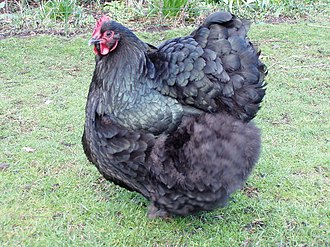Difference between revisions of "AY Honors/Poultry/Orpington"
From Pathfinder Wiki
(moved from Poultry honor to a transcludable page) |
m (1 revision) |
||
| (One intermediate revision by the same user not shown) | |||
| Line 4: | Line 4: | ||
| description =The Orpington is a large bird from the English class of chickens. It is a bold, upright breed with a wide chest, broad back, and smallish head and tail. The Orpington was bred as a dual-purpose breed (meat production and eggs), but its popularity grew as a show bird rather than a utility breed. Their large size and soft appearance together with their rich color and gentle contours make them very attractive. Orpingtons lay between 110 and 160 eggs a year. They do not stop laying in the winter. The eggs are tinted and range from small to large depending on the heredity of the breed. | | description =The Orpington is a large bird from the English class of chickens. It is a bold, upright breed with a wide chest, broad back, and smallish head and tail. The Orpington was bred as a dual-purpose breed (meat production and eggs), but its popularity grew as a show bird rather than a utility breed. Their large size and soft appearance together with their rich color and gentle contours make them very attractive. Orpingtons lay between 110 and 160 eggs a year. They do not stop laying in the winter. The eggs are tinted and range from small to large depending on the heredity of the breed. | ||
}} | }} | ||
| + | |||
| + | [[Category:Adventist Youth Honors Answer Book|{{SUBPAGENAME}}]] | ||
Revision as of 15:49, 16 May 2012
Orpington
The Orpington is a large bird from the English class of chickens. It is a bold, upright breed with a wide chest, broad back, and smallish head and tail. The Orpington was bred as a dual-purpose breed (meat production and eggs), but its popularity grew as a show bird rather than a utility breed. Their large size and soft appearance together with their rich color and gentle contours make them very attractive. Orpingtons lay between 110 and 160 eggs a year. They do not stop laying in the winter. The eggs are tinted and range from small to large depending on the heredity of the breed.

